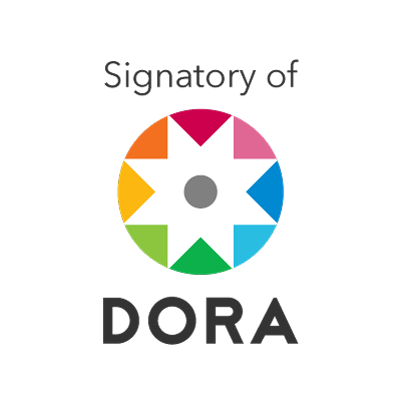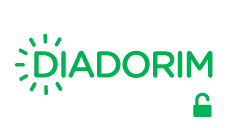Efeitos da metodologia sala de aula invertida por meio do Blackboard nas atitudes em relação às estatísticas de estudantes do ensino fundamental
um estudo com ANOVA mista
DOI:
https://doi.org/10.35699/1983-3652.2020.25107Palavras-chave:
Estudantes, Futuros professores, Educação, Estatísticas, e-Learning, Sala de aula invertidaResumo
Este estudo avalia se a utilização da metodologia sala de aula invertida apoiada em explicações dos professores por meio de plataformas virtuais de aprendizagem (Blackboard) produz uma alteração nas atitudes em relação às estatísticas dos futuros professores do ensino fundamental, dependendo do gênero. Para isso, foi utilizado um desenho quase experimental (pré-teste/pós-teste) e como técnica estatística mista ANOVA com três medidas repetidas. A amostra foi composta por 66 alunos da Faculdade de Educação da Universidade de Almería (UAL). Para realizar a análise comparativa das atitudes em relação à estatística, foi utilizado o instrumento CAHE criado por Camacho et al. (2016) composto por um total de 16 itens, classificados em três dimensões: emocional negativo (medo, medo, tensão com as estatísticas), emocional positivo (gostar, gostar, divertimento com as estatísticas) e utilidade para as estatísticas. Os resultados mostraram diferenças estatisticamente significativas entre as atitudes dos alunos entre o pré-teste e o pós-teste com a utilização dessa metodologia, mas não a interação com o sexo. Os resultados destacam que a utilização da metodologia sala de aula invertida pode ajudar a melhorar as atitudes em relação à pesquisa estatística, sendo uma arma essencial para qualquer professor que queira inovar nas suas aulas.
Referências
APARICIO, A.; BAZÁN, J. L. Aspectos afectivos intervinientes en el aprendizaje de la estadística: actitudes y sus formas de evaluación. Acta Latinoamericana de Matemática Educativa, n. 21, p. 180-189, 2008.
ARTEAGA, B.; GARCÍA, M. Diseño y evaluación de estrategias adaptativas para la mejora del rendimiento en matemáticas en educación secundaria. Bordón, v. 62, n. 4, p. 25-35, 2010.
AYCICEK, B.; YELKEN, T. Y. The effect of flipped classroom modelo in students´classroom engagement in teaching English. International journal of instruction, v. 11, n. 2, p. 385-398, 2018. DOI: https://doi.org/10.12973/iji.2018.11226a.
BISHOP, J. L.; VERLEGER, M. A. The flipped classroom: A survey of the research. En ASEE National Conference Proceedings, Atlanta, GA, v. 30, n. 9, p. 1-18, 2013.
BLANCO, Á. Una revisión crítica de la investigación sobre las actitudes de los estudiantes universitarios hacia la Estadística. Revista Complutense de Educación, v. 19, n. 2, p. 311-330, 2008.
BOND, M. E.; PERKINS, S. N.; RAMIREZ, C. Students' perceptions of Statistics: an exploration of attitudes, conceptualizations, and content knowledge of Statistics. Statistics Education Research Journal, v. 11, n. 2, p. 6-25, 2012.
CAMACHO, X. G. O.; MARTÍNEZ, S. J. R.; DE MIGUEL, C. R. Cuestionario de actitudes hacia la estadística (cahe): evidencias de validez y fiabilidad de las puntuaciones en una muestra de alumnos de educación. Bordón. Revista de pedagogía, v. 68, n. 4, p. 121-136, 2016.
CARLSON, K. A.; WINQUIST, J. R. Evaluating an Active Learning Approach to Teaching Introductory Statistics: A Classroom Workbook Approach. Journal of Statistics Education, v. 19, n.1, 2011. Disponible en: http://www.amstat.org/publications/jse/v19n1/carlson.pdf.
CARMONA, J. Una revisión de las evidencias de fiabilidad y validez de los cuestionarios de actitudes y ansiedad hacia la Estadística. Statistics Education Research Journal, v. 3, n. 1, p. 5-28, 2004.
CASAS, J. C.; VILLARRAGA, M. E.; MAZ, A.; LEÓN, C. Factores de influencia en las actitudes hacia la estadística de alumnos de educación media. Espacios, v. 39, n. 52, p. 33 [en línea], 2018. Disponible en: http://www.revistaespacios.com/a18v39n52/a18v39n52p33.pdf.
CHIESI, F.; PRIMI, C. Do attitudes toward statistics change during an introductory statistics course? A study on Italian Psychology students. CERME, n. 10, p. 723-731, 2017.
CHOWDHURY, S. K. Prior Knowledge, Sex and Students' Attitude towards Statistics: A Study on Postgraduate Education Students. American Journal of Educational Research, v. 6, n. 3, p. 270-276, 2018.
COMAS, C.; MARTINS, J. A.; NASCIMENTO, M. M.; ESTRADA, A. Estudio de las actitudes hacia la estadística en estudiantes de psicología. Bolema: Boletim de Educação Matemática, v. 31, n. 57, p. 479-496, 2017. DOI: http://dx.doi.org/10.1590/1980-4415v31n57a23.
COTO, M. Descubrimiento del estilo de aprendizaje dominante en estudiantes de Matemática Superior. Revista educación, v. 44, n. 1, 2020. Doi: https://doi.org/10.15517/REVEDU.V44I1.38571.
CRONHJORT, M.; FILIPSSON, L.; WEURLANDER, M. Improved engagement and learning in flipped-classroom calculus. Teaching mathematics and its applications, v. 37, n. 3, p. 113-121, 2018. DOI: https://doi.org/10.1093/teamat/hrx007.
DARIAS, E. J. Escala de actitudes hacia la estadística. Psicothema, v. 12, n. 2, p. 176-178, 2000.
ELIZAR, E.; DARMAWAN, I. G. N. A Multigroup Invariance Analysis and Gender Difference of Students’ Self-efficacy and Attitude Concerning Mathematics. Jurnal Didaktik Matematika, v. 5, n. 2, p. 1-10, 2018.
ESCALANTE, E.; REPETTO, A. M.; MATTINELLO, G. Exploración y análisis de la actitud hacia la estadística en alumnos de psicología. Liberabit. Revista de Psicología, v. 18, n. 1, p. 15-26, 2012.
ESPERANZA, P.; FABIAN, K.; TOTO, C. Flipped Classroom Model: Effects on Performance, Attitudes and Perceptions in High School Algebra. En: Verbert, K.; Sharples, M.; Klobucar, T. (Eds.). Adaptive and Adaptable Learning: Lecture Notes in Computer Science. Switzerland: Springer, 2016, v. 9891, p. 85-97. DOI: https://doi.org/10.1007/978-3-319-45153-4_7.
ESTRADA, A.; BAZÁN, J.; APARICIO, A. Evaluación de las propiedades psicométricas de una escala de actitudes hacia la estadística en profesores. Avances de Investigación en Educación Matemática, n. 3, p. 5-23, 2013. DOI: https://doi.org/10.35763/aiem.v0i3.61.
ESTRADA, A., BERNABEU, C. B.; AYMEMÍ, J. M. F. Un estudio comparado de las actitudes hacia la estadística en profesores en formación y en ejercicio. Enseñanza de las ciencias: Revista de investigación y experiencias didácticas, v. 22, n. 2, p. 263-273, 2004.
FROELICH, A. G.; STEPHENSON, W. R.; DUCKWORTH, W. M. Assessment of materials for engaging students in statistical discovery. Journal of Statistics Education, v. 16, n. 2, p. 10-22, 2008.
GALINDO, H.; BEZANILLA, M. J. Una revisión sistemática de la metodología flipped classroom a nivel universitario en España. Innoeduca. International Journal of Technology and Educational Innovation, v. 5, n. 1, p. 81-90, 2019. DOI: https://doi.org/10.24310/innoeduca.2019.v5i1.4470.
GARCÍA, J. A.; FALLAS, M. A.; ROMERO, A. Las actitudes hacia la estadística del estudiantado de orientación. Revista electrónica educare, v. 19, n. 1, p. 25-41, 2015. DOI: http://dx.doi.org/10.15359/ree.19-1.2.
GONZÁLEZ, D.; JEONG, J. S.; RODRÍGUEZ, D. A.; CAÑADA, F. Performance and Perception in the Flipped Learning Model: An Initial Approach to Evaluate the Effectiveness of a New Teaching Methodology in a General Science Classroom. Journal of Science Education and Technology, v. 25, n. 3, p. 450-459, 2016. DOI: https://doi.org/10.1007/s10956-016-9605-9.
GUÀRDIA, J.; FREIXA, M.; PERÓ, M.; TURBANY, J.; COSCULLUELA, A.; BARRIOS, M.; RIFÀ, X. Factors related to the academic performance of students in the statistics course in Psychology. Quality and Quantity, v. 40, p. 661-674, 2006.
HANNIGAN, A.; GILL, O.; LEAVY, A. M. An investigation of prospective secondary mathematics teachers’ conceptual knowledge of and attitudes towards statistics. Journal of Mathematics Teacher Education, v. 16, n. 6, p. 427-449, 2013.
HARVEY, A. L. The Validity of Six Beliefs About Factors Related to Statistics Achievement. En: Annual Meeting of the American Educational Research Association, 69th, 1985, Chicago, IL, March 31-April 4).
IMMEKUS, J. C. Flipping Statistics Courses in Graduate Education: Integration of Cognitive Psychology and Technology. Journal of Statistics Education, v. 27, n. 2, p. 79-89, 2019. DOI: https://doi.org/10.1080/10691898.2019.1629852.
JOHNSON, G. B. Student Perceptions of the flipped Classroom. Okaganan: The University of British Columbia, 2013.
KHAVENSON, T.; OREL, E.; TRYAKSHINA, M. Adaptation of survey of attitudes towards statistics (SATS 36) for Russian sample. Procedia-Social and Behavioral Sciences, v. 46, p. 2126-2129, 2012. DOI: http://dx.doi.org/10.1016/j.sbspro.2012.05.440.
KOH, D.; ZAWI, M. K. Statistics Anxiety among Postgraduate Students. International Education Studies, v. 7, n. 13, p. 166-174, 2014.
KONG, S. C. Developing information literacy and critical thinking skills through domain knowledge learning in digital classrooms: An experience of practicing flipped classroom strategy. Computers & Education, v. 78, p. 160-173, 2014. DOI: https://doi.org/10.1016/j.compedu.2014.05.009.
LEÓN, C.; CASAS, J. C.; MAZ, A.; VILLARRAGA, M. E. Analysis of attitudinal components towards statistics among students from different academic degrees. PLoS ONE, v. 15, n. 1, p. 1-13, 2020. DOI: https://doi.org/10.1371/journal.pone.0227213.
LIMNIOU, M.; SCHERMBRUCKER, I.; LYONS, M. Traditional and flipped classroom approaches delivered by two different teachers: The student perspective. Education and Information Technologies, v. 23, p. 797–817, 2018. DOI: https://doi.org/10.1007/s10639-017-9636-8.
LITTLE, C. The Flipped Classroom in Further Education: Literature Review and Case Study. Research in Post-Compulsory Education, v. 20, n. 3, p. 265-279, 2015.
LÓPEZ, J.; POZO, S.; DEL PINO, M. J. Projection of the Flipped Learning Methodology in the Teaching Staff of Cross-Border Contexts. Journal of New Approaches in Educational Research, v. 8, n. 2, p. 184-200, 2019. DOI: https://doi.org/10.7821/naer.2019.7.431.
MARTÍN, D.; TOURÓN, J. El enfoque flipped learning en estudios de magisterio: percepción de los alumnos. RIED. Revista Iberoamericana de Educación a Distancia, v. 20, n. 2, p. 187-211, 2017. DOI: http://dx.doi.org/10.5944/ried.20.2.17704.
MASON, G. S.; SHUMAN, T. R.; COOK, K. E. Comparing the Effectiveness of an Inverted Classroom to a Traditional Classroom in an Upper-Division Engineering Course. IEEE Transactions on Education, v. 56, n. 4, p. 430-435, 2013. DOI: https://doi.org/10.1109/TE.2013.2249066.
MCBRIDE, C. Flipping Advice for Beginners: What I Learned Flipping Undergraduate Mathematics and Statistics Classes. PRIMUS, v. 25, n. 8, p. 694–712, 2015. DOI: https://doi.org/10.1080/10511970.2015.1031300.
MENDAÑA, C.; POY, R.; LÓPEZ, E. Metodología flipped classroom: percepción de los alumnos de diferentes grados universitarios. Innoeduca. International Journal of Technology and Educational innovation, v. 5, n. 2, p. 178-188, 2019. DOI: https://doi.org/10.24310/innoeduca.2019.v5i2.5223.
METAUTE, J. C.; VILLARREAL, J. E.; VARGAS, J. P.; SAKER, J.; BUSTAMANTE, L. E. Aula invertida y pedagogía conceptual en la enseñanza y aprendizaje de la estadística en educación superior. El caso de la estimación y la prueba de hipótesis. Espacios, v. 39, n. 10, 2018. Disponible en: https://www.revistaespacios.com/a18v39n10/a18v39n10p39.pdf.
MONDÉJAR, J.; VARGAS, M.; MONDÉJAR, J. A. Impacto del uso del e-learning en las actitudes hacia la Estadística. Revista Latinoamericana de Tecnología Educativa, v. 6, n. 2, p. 31-47, 2007.
MOTOS, P.; AGUILAR, Á. I.; COLOMO, E.; GABARDA, V. Adquisición en competencias digitales en educación secundaria a través de Flipped Classroom y realidad aumentada. En: López, E.; Cobos, D.; Martín, A. H.; Molina, L.; Jaén, A. (Coords.). Experiencias pedagógicas e innovación educativa: aportaciones desde la praxis docente e investigadora. Barcelona: Octaedro, 2018, p. 2864-2877.
NIELSEN, P. L.; BEAN, N. W.; LARSEN, R. A. A. The Impact of a Flipped Classroom Model of Learning on a Large Undergraduate Statistics Class. Statistics Education Research Journal, v. 17, n. 1, p. 121–140, 2018.
O’FLAHERTY, J.; PHILIPHS, C. The use of flipped classrooms in higher education: A scoping review. The Internet and Higher Education, v. 25, p. 85–95, 2015. DOI: https://doi.org/10.1016/j.iheduc.2015.02.002.
ORDÓÑEZ, X. G.; ROMERO, S. J.; RUIZ, C. Actitudes hacia la Estadística en Alumnos de Educación: análisis de perfiles. Revista de Educación, n. 385, p. 173-200, 2019. DOI: https://doi.org/10.4438/1988-592X-RE-2019-385-421.
PAPANASTASIOU, E. C.; ZEMBYLAS, M. Anxiety in undergraduate research methods courses: Its nature and implications. International Journal of Research & Method in Education, v. 31, n. 2, p. 155-167, 2008.
PEÑA, A.; SUÁREZ, R.; SANJUÁN, G.; RABELL, O.; GÓMEZ, M.; MORALES, S. C. Actitudes hacia la asignatura de Estadística en estudiantes de la Facultad de Ciencias Médicas “General Calixto García”. Revista Habanera de Ciencias Médicas, v. 14, n. 6, p. 872-883, 2015.
PÉREZ, L. E.; APARICIO, A. S.; BAZÁN, J. L.; ABDOUNUR, O. J. Actitudes hacia la estadística de estudiantes universitarios de Colombia. Educación Matemática, v. 27, n. 3, p. 111-149, 2015.
PETERSON, D. J. The Flipped Classroom improves student achievement and course satisfaction in a statistics course: a quasi-experimental study. Teaching of psychology, v. 43, n. 1, p. 10-15, 2016. DOI: https://doi.org/10.1177/0098628315620063.
RAMÍREZ, C.; SCHAU, C.; EMMIOGLU, E. The importance of attitudes in statistics education. Statistics Education Research Journal, v. 11, n. 2, p. 57-71, 2012.
ROCA, A. E. Actitudes hacia la estadística: un estudio con profesores de educación primaria en formación y en ejercicio. En: Sociedad Española de Investigación en Educación Matemática (Ed.). Investigación en educación matemática: comunicaciones de los grupos de investigación del XI Simposio de la SEIEM, celebrado en La Laguna del 4 al 7 de septiembre de 2007. España: Sociedad Española de Investigación en Educación Matemática, SEIEM, 2008, p. 121-140.
RODRÍGUEZ, N. Actitudes de los estudiantes hacia la estadística. Interdisciplinaria, v. 28, n. 2, p. 199-205, 2011.
RODRÍGUEZ, N. L.; MONTAÑEZ, E. G.; ROJAS, I. Dificultades en contenidos de Estadística Inferencial en Alumnos Universitarios. Revista Electrónica Iberoamericana de Educación en Ciencia y Tecnología, v. 2, n. 1, p. 57-73, 2010.
ROSLI, M. K.; MAAT, S. M.; ROSLI, R. Students’ attitude and anxiety towards statistics: A descriptive analysis. Research on Education and Psychology, v. 1, n. 1, p. 47-56, 2017.
RUIZ DE MIGUEL, C. Actitudes hacia la estadística de los alumnos del Grado de Pedagogía, Educación Social y Maestro de Educación Infantil y Maestros de Educación Primaria de la UCM. Educación XX1, v. 18, n. 2, p. 351-374, 2015. DOI: https://doi.org/10.5944/educXX1.12158.
SALINAS, J.; MAYÉN, S. A. Estudio exploratorio de las actitudes hacia la estadística en estudiantes mexicanos de bachillerato. Avances de Investigación en Educación Matemática, n. 10, p. 73-90, 2016.
SÁNCHEZ, C.; SÁNCHEZ, M. T.; RUIZ, J. Experiencias reales de aula invertida como estrategia metodológica en la educación universitaria española. Publicaciones, v. 49, n. 2, p. 39-58, 2019. DOI: https://doi.org/10.30827/publicaciones.v49i2.8270.
SÁNCHEZ, J.; RUIZ, J.; SÁNCHEZ, E. Flipped classroom. Claves para su puesta en práctica. Edmetic, v. 6, n. 2, p. 336-358. DOI: https://doi.org/10.21071/edmetic.v6i2.5832.
SCHWARTZ, T. A. Flipping the Statistics Classroom in Nursing Education. The Journal of Nursing Education, v. 53, n. 4, p. 199–206, 2014. DOI: https://doi.org/10.3928/0148434-20140325-02.
SENGER, E. To FLIP or not to FLIP: Comparative case study in higher education in Turkey. Computers in Human Behavior, v. 64, p. 547-555, 2016. DOI: https://doi.org/10.1016/j.chb.2016.07.034.
SHINABERGER, L. Components of a Flipped Classroom Influencing Student Success in an Undergraduate Business Statistics Course. Journal of Statistics Education, v. 25, n. 3, p. 122-130, 2017. DOI: https://doi.org/10.1080/10691898.2017.1381056.
SOSA, M. J.; PALAU, R. F. Flipped Classroom para adquirir la competencia digital docente: Una experiencia didáctica en la educación superior. Pixel-Bit. Revista de Medios y Educación, n. 52, p. 37-54, 2018.
STRAYER, J. F. How learning in an inverted classroom influences cooperation, innovation and task orientation. Learning Environ Res, v. 15, p. 171–193, 2012. DOI: https://doi.org/10.1007/s10984-012-9108-4.
TAWFIK, A. A.; LILLY, C. Using a flipped classroom approach to support problem-based learning. Technology knowledge and learning, v. 20, n. 3, p. 299-315, 2015. DOI: https://doi.org/10.1007/s10758-015-9262-8.
TISHKOVSKAYA, S.; LANCASTER, G. A. Statistical education in the 21st century: A review of challenges, teaching innovations and strategies for reform. Journal of Statistics Education, v. 20, n. 2, p. 1-56, 2012. Disponible en: www.amstat.org/publications/jse/v20n2/tishkovskaya.pdf.
TOMÁS, J. M.; LIMA, A.; PACHECO, J. Adaptação e validação transcultural de uma medida de atitudes acerca da estatística. Revista Iberoamericana de Diagnóstico y Evaluación psicológica, v. 1, n. 39, p. 102-112, 2015.
TOUCHTON, M. Flipping the Classroom and Student Performance in Advanced Statistics: Evidence from a Quasi-Experiment. Journal of Political Science Education, v. 11, n. 1, p. 28–44, 2015.
TOURÓN, J.; SANTIAGO, R. El modelo Flipped Learning y el desarrollo del talento en la escuela. Revista de Educación, n. 368, p. 174–195, 2015. DOI: http://doi.org/10.4438/1988-592X-RE-2015-368-288.
TRIANTAFYLLOU, E.; TIMCENKO, O. Introducing a flipped classroom for a statistics course: A Case study. En: Karaoglan, B. (Ed.). Proceedings of 25th Annual Conference European Association for Education in Electrical and Information Engineering (EAEEIE). Francia: EAEEIE, 2014, p. 5-8. Doi: https://doi.org/10.1109/EAEEIE.2014.6879373.
VAHEDI, S.; FARROKHI, F.; BEVRANI, H. A Confirmatory Factor Analysis of the Structure of Statistics Anxiety Measure: An examination of four alternative models. Iranian journal of psychiatry, v. 6, n. 3, p. 92-98, 2011.
VANHOOF, S.; KUPPENS, S.; CASTRO, A. E.; VERSHAFFEL, L.; ONGHENA, P. Measuring statistics attitudes: structure of the survey of attitudes towards statistics (SATS-36). Statistics Education Research Journal, v. 10, n. 1, p. 35-51, 2011.
VILÀ, R.; RUBIO, M. J. Actitudes hacia la Estadística en el alumnado del grado de Pedagogía de la Universidad de Barcelona. REDU. Revista de Docencia Universitaria, v. 14, n. 1, p. 131-149, 2016.
WILSON, S. G. The flipped class: a method to address the challenges of an undergraduate statistics course. Teaching of psychology, v. 40, n. 3, p. 193-199, 2013. DOI: https://doi.org/10.1177/0098628313487461.
WINQUIST, J. R.; CARLSON, K. A. Flipped statitics class results: better perfomance than lecture over one year later. Journal of Statistics Education, v. 22, n. 3, 2014. DOI: https://doi.org/10.1080/10691898.2014.11889717.
Downloads
Publicado
Edição
Seção
Licença

Este trabalho está licenciado sob uma licença Creative Commons Attribution 4.0 International License.
Este é um artigo em acesso aberto que permite o uso irrestrito, a distribuição e reprodução em qualquer meio desde que o artigo original seja devidamente citado.











